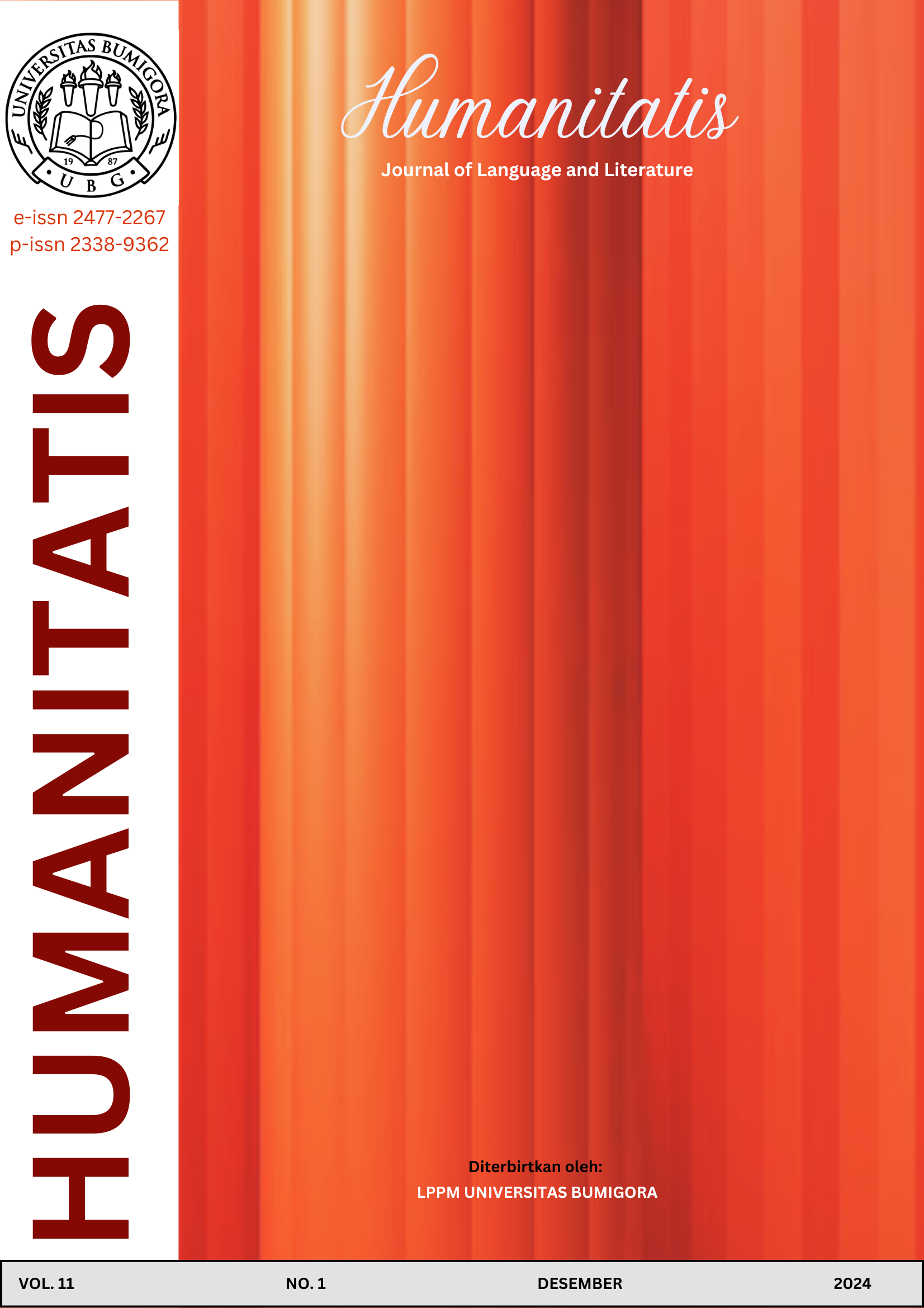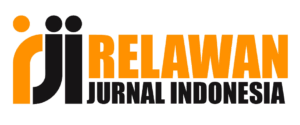A Diglossia Phenomenon in Sasak Language Spoken by the Noblemen of Mambalan
Abstract
This study aims to determine the language used and the diglossia situation among the members of the aristocracy of Mambalan Village, Gunung Sari District, West Nusa Tenggara. The approach used in this study is descriptive qualitative, which applies descriptive methods. Data collection techniques in this study are literature, observation, interviews, recording techniques, and note-taking. Data on diglossia are seen from seven domains: family domain, social domain, buying and selling transaction domain, religious domain, government domain, education domain, and profession domain. Based on research findings show that the aristocracy of Mambalan Village is bilingual and multilingual. This can be seen from the variety of languages used, namely Sasak alus language, Sasak jamak language, and Indonesian. This condition supported the occurrence of the diglossia situation among them. The study’s results based on the family domain show that the aristocracy of the Mambalan village still uses the Sasak alus and Indonesian as a high language (H). In the buying and selling transactions, it can be seen that the Sasak alus language and Indonesian are the high language (H) and most dominant languages used by the noblemen of Mambalan village. In the religion domain, especially when sermons in the mosque are more dominant in using Indonesian as a high language (H). While in the government, education, and professional domains it is more dominant in using Indonesian as a high language variety (H).
References
classroom. International Journal of Science Education, 42(14), 2290–2330. https://doi.org/10.1080/
09500693.2019.1629039
Andini, E. B., & Simatupang, e. C. (2020). Diglossia on Novel. English Journal Literacy Utama, 4(1), 235–242.
https://doi.org/10.33197/ejlutama.vol4.iss2.2020.419
Árokay, J., Gvozdanović, J., & Miyajima, D. (Eds.). (2014). Divided Languages?: Diglossia, Translation and
the Rise of Modernity in Japan, China, and the Slavic World. Springer International Publishing.
https://link.springer.com/10.1007/978-3-319-03521-5
Azizah, N., & Sudiran, S. (2015). A Study on Diglossia Used by Helen Keller as The Main Character in George Sullivan’s Novel ”Helen Keller”. Celtic : A Journal of Culture, English Language Teaching, Literature
and Linguistics, 2(1), 1–18. https://doi.org/10.22219/celtic.v2i1.4672
Candra, R. A. (2014). A Study of the Use of Diglossia in the Main Character Dialogue of the Pursuit of
Happiness Movie [Journal:eArticle]. Brawijaya University. https://www.neliti.com/publications/205156/
Chaer, A. (2018). Sosiolinguistik: Perkenalan Awal. Rineka Cipta.
Fishman, J. A. (1967). Bilingualism With and Without Diglossia; Diglossia With and Without Bilingualism. Journal
of Social Issues, 23(2), 29–38. https://doi.org/10.1111/j.1540-4560.1967.tb00573.x
Hossain, M. M., & Fatema, K. (2022). Diglossia as a Symbolic Capital in Bangladesh:ABourdieunAnalysis. Journal
Corner of Education, Linguistics, and Literature, 2(2), 81–94. https://doi.org/10.54012/jcell.v2i2.71
Khukhuni, G. T., Теймуразович, Х. Г., Valuitseva, I. I., & Ивановна, В. И. (2020). Bilingualism or Monolingualism? (Some Aspects of the Bilingualism and Dyglossia in Literary Creativity). Polylinguality and
Transcultural Practices, 17(2), 196–203. https://doi.org/10.22363/2618-897X-2020-17-2-196-203
Moon, Y. J., & Selviani, A. (2019). Diglosia pada Mahasiswa Bahasa dan Sastra Indonesia STKIP Santu Paulus
Ruteng. Jurnal Penelitian Pendidikan Bahasa, Sastra dan Budaya, 2(2), 82–93. https://doi.org/10.
36928/JPRO.V2I2.568
Nisa, L. N. K., Khurniawati, D. R., & Setowati, R. (2022). The Present of Diglossia in Social Media Twitter.
Prosiding Seminar Nasional Hukum, Bisnis, Sains dan Teknologi, 2(1), 1347. https://ojs.udb.ac.id/
index.php/HUBISINTEK/article/view/1531
Nurhayati, D. (2019). Bilingualisme dan Diglosia Dalam Acara Njajah Deso Milang Kori Radio Ismoyo Palembang
serta Implementasinya di MTS Roudhotul Mubarokah Oki dengan Menggunakan Media Internet. PROSIDING SEMINAR NASIONAL PROGRAM PASCASARJANA UNIVERSITAS PGRI PALEMBANG.
https://jurnal.univpgri-palembang.ac.id/index.php/Prosidingpps/article/view/2531
Pertiwi, M., Hamzah, H., & Marlina, L. (2017). The Profile of Diglossic Javanese in Three Generations of Javanese
Descendants in Sitiung Dharmasraya. English Language and Literature, 6(2). https://doi.org/10.24036/
ell.v6i2.9812
Setiawati, R. D. (2019). Variasi Bahasa dalam Situasi Tidak Formal pada Mahasiswa Program Studi Pendidikan
Bahasa Indonesia di Universitas Tadulako. Jurnal Bahasa dan Sastra, 4(1), 1–11.
Shofyah, N. W. (2021). The Use of Diglossia in Sumenep Regency, Madura. Journal of English Language
Teaching and English Linguistics, 6(2), 22–32. https://doi.org/10.31316/eltics.v6i2.1516
Simanjuntak, F., Haidir, H., & Junaidi, M. P. (2019). Diglossia: Phenomenon and Language Theory. European
Journal of Literature, Language and Linguistics Studies, 3(2), 58–65. https://doi.org/10.5281/
ZENODO.3365366
Suandi, I. N. (2014). Sosiolinguistik. Sanata Dharma University Press.
Sugita, D. N., Sriasih, S. A. P., & Indriani, M. S. (2015). Diglosia Guru dalam Pembelajaran Bahasa Indonesia Kelas
Xa SMA Negeri 2 Semarapura. Jurnal Pendidikan Bahasa dan Sastra Indonesia Undiksha, 3(1).
Yance, I. (2017). Situasi Diglosia Suku Bonai di Provinsi Riau. Madah, 8(2), 127–136. https://doi.org/10.26499/
madah.v8i2.645

This work is licensed under a Creative Commons Attribution 4.0 International License.













